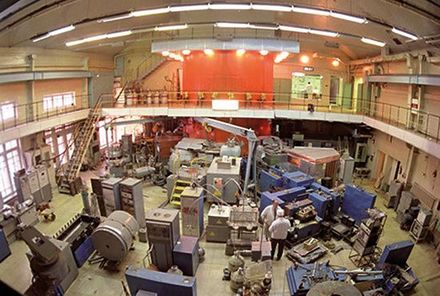|
Neutron research complex based on the IR-8 research reactor
In 1955, at the initiative of I.V. Kurchatov began designing research reactors IRT and VVR-S for the nuclear centers of the USSR.
IRT-1000 reactor was launched on November 26, 1957 at the Kurchatov Institute. Then IRT-1000 was reconstructed and was named IRT-M after development process. IRT-M reactor had been worked for more than 20 years. In early 1979 director of Institute of Atomic Energy Academician A.P. Alexandrov gave the order to stop the IRT-M reactor operation and start work on its modification. The 4th floor was built on the reactor hall, the height of the biological protection of the reactor tank was increased from 8 m to 11 m, crane ways and hoisting mechanisms were erected, a storage tank for spent fuel assemblies was built. The reactor was put into operation at a desired capacity of 8 MW on October 30, 1981, and it was renamed into research nuclear reactor IR-8.
The IR-8 reactor due to neutron-physical properties turned out to be a unique nuclear setup for providing research both on extracted neutron beams through horizontal experimental channels (HEC) and vertical experimental channels (VEC) installed in the reactor core and reactor reflector.
The neutron research complex based on the IR-8 research reactor is used to carry out fundamental and applied research in the fields of nuclear physics, solid state physics, radiation materials science, nanosystems and nanostructures physics, radiobiology and biophysics, since it allows complex studies using neutrons and gamma radiation in a wide range of wavelengths using various techniques.
The reactor core and biological protection layout features provide the best neutron flux parameters for reactors of this class, both in the core and in the reflector and at the exit from horizontal channels.
|

